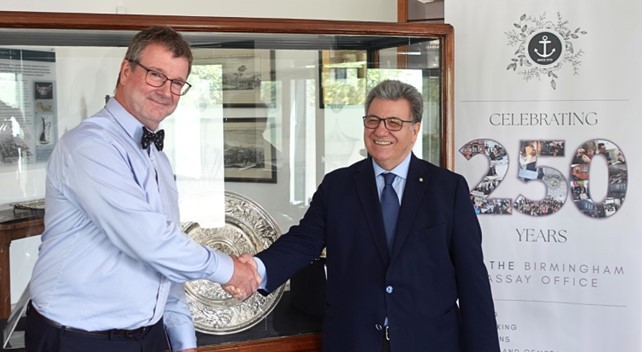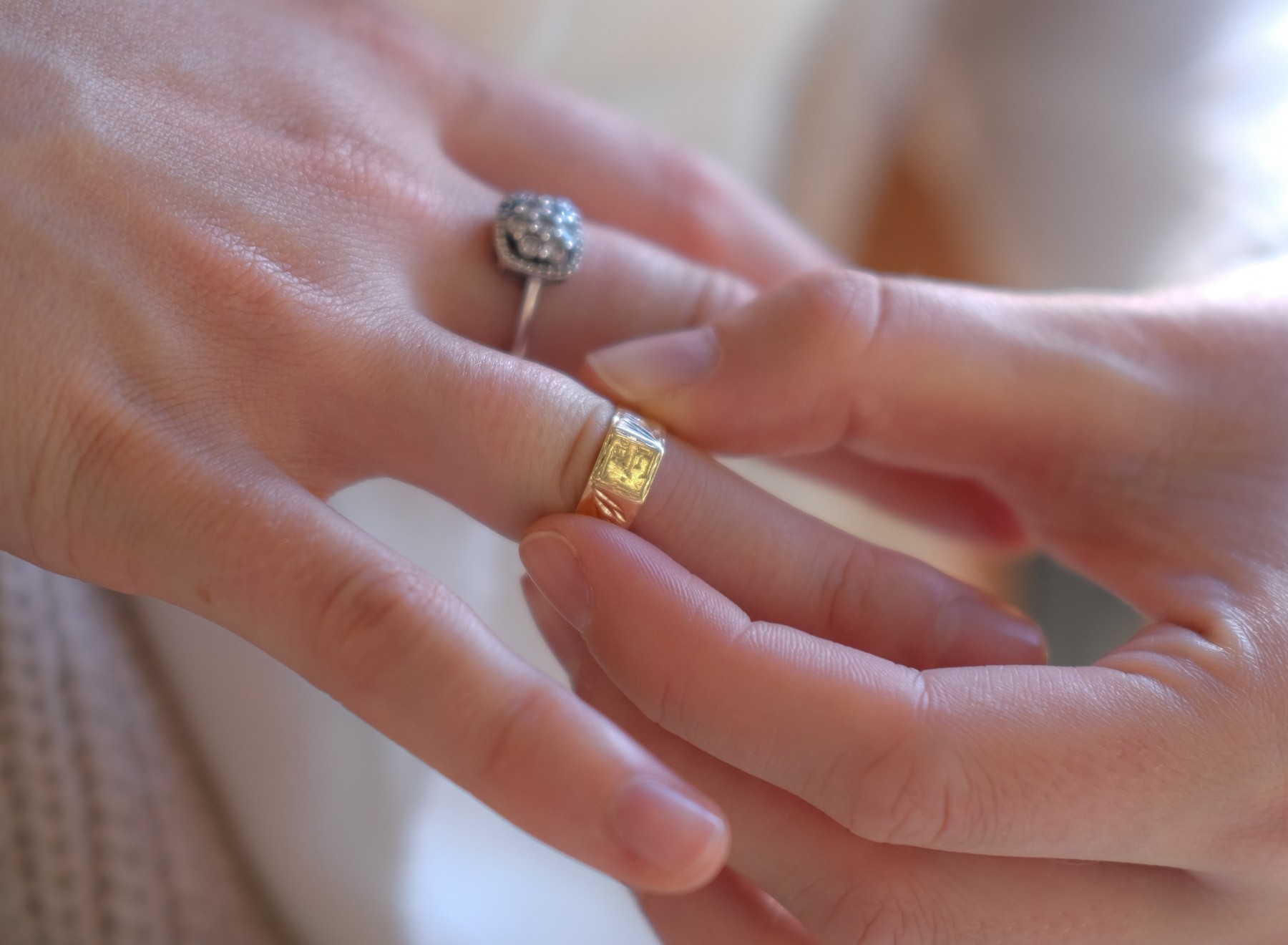After several years of white metal being the clear favourite for jewellery in all sectors of the market, yellow and rose gold are finally making a comeback. Assay Office Birminghamâs DIPPAL MANCHANDA sheds some light on the quality assurance issues this poses.
Platinum, palladium and white gold have been in the ascendancy for a long time and the popularity of silver has grown enormously while the price of gold has made even 9ct gold unaffordable for many.
However, the warmer tones of rose gold in particular are evident in many jewellersâ ranges this year and inevitably the fine gold look is being aped by the mass market with a huge influx of rose gold plated product.
THE BASICS
All gold is yellow. There is no such thing as red, pink or rose gold. There are however gold alloys which appear rose, red or pink, so when we refer to coloured gold we mean coloured gold alloys. The colour of gold alloy varies with the percentage of other metals used in the alloys.
Gold is yellow and copper is red, the only two coloured pure metals. All other metals are white or grey in colour. The addition of copper considerably heightens the yellow colour of gold, the alloy passing through different grades of yellow to red-yellow, and finally to the rich red of copper, as the proportion of copper is increased. But if silver and a small amount of zinc is added to rich red copper and gold alloy then the alloy adopts the characteristic colour known as ârose goldâ.
Since the proportion of gold is definitively fixed by legislation, the composition and in turn the colour of the ternary alloys can only be varied by altering the ratio or proportions of the silver, copper and other elements added to the gold. With 18ct and 22ct alloys containing a comparatively high percentage of gold, 75% and 91.6% respectively, there is little room for a variation in composition, and therefore colour, but with the lower carat qualities much greater scope for variation is available.
RISING POPULARITY
Assay Office Birmingham has assayed and hallmarked many rose gold items this year. These range from beautiful bespoke items from local Birmingham designer-makers through high ticket price bridal sets, and thousands of silver items plated with rose gold salt. Plating silver with gold has become increasingly common and the assayers are used to having to be extra vigilant to ensure they capture the composition of the different layers of metal when testing prior to hallmarking. An item which is gold plated on silver will always have a silver hallmark, and the silver exemption limits apply, so the legal exemption weight is 7.78 grams. However, many customers are choosing to hallmark their underweight items which are rose gold plated on silver, to differentiate them from others in the market which are rose gold plated on base metal. Without the hallmark on lightweight articles the consumer has to trust the description but, as ever, the hallmark is the only way to be absolutely sure of the precious metal content of the product.
Whatever the metal beneath the plating, the quality of the plating is crucial. Following the surge in rose gold plated items, the Analytical Laboratory has helped with an influx of enquiries concerning quality problems with rose gold plating.
ENSURING PLATING QUALITY
In order to understand the problems it is necessary to understand the basic principles of the plating process. Electroplating is a process by which a layer of metal is deposited upon a negative electrode (the cathode) â the article to be plated. This is achieved by passing an electric current through a solution (the electrolyte), which results in the migration of ions to the electrodes: positive ions (cations) to the negative electrode (cathode).
There are accepted standards by which coatings may be applied to specific precious metals, these are based on the principle that the plating material is always of higher value than the metal beneath, which is logical as it would be highly unusual, for example, to cover gold with silver. The standards set out by the UK Hallmarking Act and reflected in the CIBJO Blue Book for Precious Metals therefore stipulate that platinum should only be plated with rhodium or more platinum, Gold with rhodium, platinum or more gold, palladium with rhodium, platinum gold or more palladium and silver with rhodium, platinum, palladium, gold or more silver.
In achieving a high quality plating, preparation and the quality of the finish on the article beneath the plating are key. Typically articles will be pre-polished to create a smooth finish and any articles with cracks, pores, slag inclusions, pits and projections which have occurred during the rolling or casting process need to be rejected first-hand. The next process is buffing but the objective is to achieve a completely clean, smooth, uniform and bright surface, not a mirror finish as this will produce a black tint. Degreasing is then carried out using organic solvents (such as trichloroethylene). At this point a base metal article made from an alloy containing iron, steel, nickel, zinc, or tin would normally be copper plated but for precious metal articles base metal plating is not allowed.
Achieving a good quality plating is essential as the consumer will expect the article to remain in good condition during wear. They will not expect there to be any tarnishing or colour fading and will expect the plating to be bright and uniform. An appropriate specification will ensure that the product meets all these criteria.
It is important that there is no breach in the plating as any crack or breach in the coating will allow the surface contaminants, corrosive environmental substances and chlorides to reach the substrate underneath. This in turn results in the formation of corrosive metal oxides that can then travel back to the surface through the same cracks and give rise to pitting corrosion; which gives a similar appearance to that exhibited by tarnishing.
POROSITY IN PLATING
One of the most frequently occurring quality problems with plating is porosity and experts at the Analytical Laboratory at the Assay Office are frequently asked to investigate issues associated with plating. This porosity decreases as the more noble metal layer becomes thicker. However, sometimes due to certain technical reasons it is diffi cult to produce porosity free noble metal plating. For certain applications particularly in complex shaped items, going beyond a certain thickness can lead to other technical problems occurring such as change in optical properties, brittleness or stress within the plated layer. Each piece is therefore individually assessed to determine the cause of the problem.
Other tests which are available for plating include the measurement of the colour to identify whether the article meets the specification, susceptibility to tarnishing and wear resistance.
PLATING THICKNESS UNITS
In order for the plating to be eff ective it obviously needs to be an appropriate thickness. Plating thickness is measured in microns.
- One micro-inch = 0 .0254 microns
- One micron = 39.37 micro-inches
- One Mil. = 25.4 microns
- 1000 microns = 1 millimeter
If you would like to find out more information about testing services provided by The Analytical Laboratory, you can do so by getting in touch with us on:
Tel: 0871 871 6020 E-mail: testing@theassayoffice.co.uk Website: www.thelaboratory.co.ukYour item has been added to the basket
You need to create an account, or login before you can add this item to your basket.











